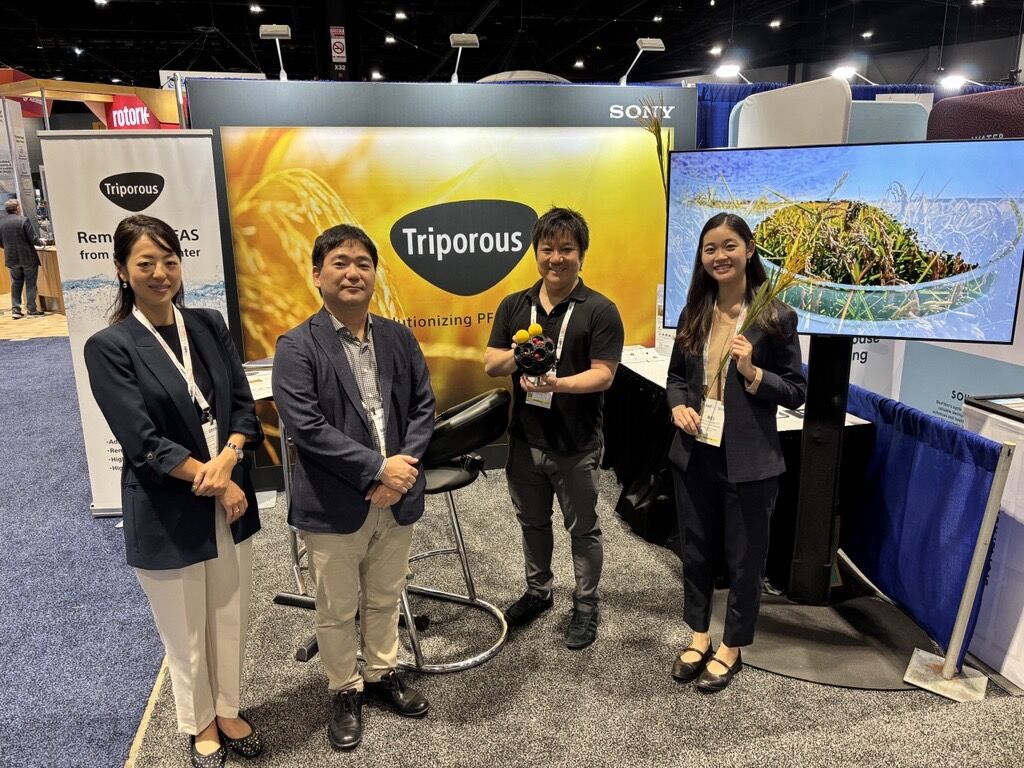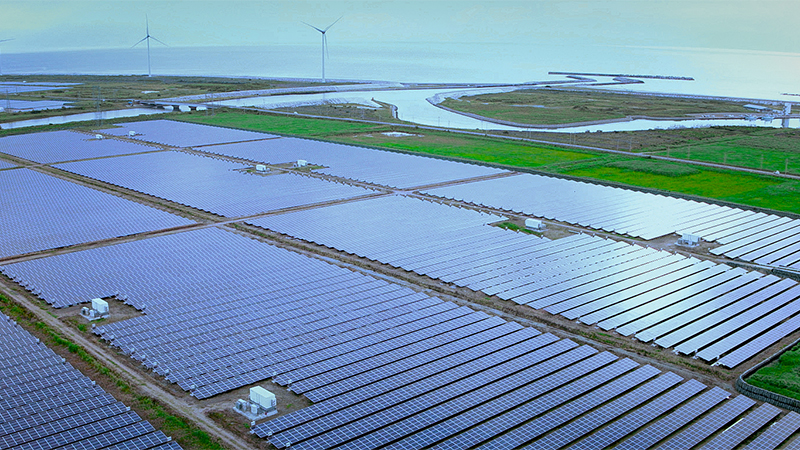VISIONS Magazine (October 2025 Edition)
A Breakthrough from Rice Husks: Sumitomo and Sony Bring Triporous to WEFTEC

Sumitomo Corporation Group’s work to advance technology that supports both business growth and environmental responsibility was recently on display in Chicago; The Green Chemicals Team joined its partner Sony Group Corporation at WEFTEC 2025, the largest conference in North America focused on water sustainability and innovation. Together, the companies highlighted Triporous, Sony’s porous carbon material made from rice husks that has shown strong performance in removing Per- and polyfluoroalkyl substances (PFAS) from water and soil.
Before WEFTEC, many U.S. operators had only heard about Triporous through early outreach. Meeting face-to-face gave SC Group and Sony a chance to test that interest and gather real-world feedback across the water treatment industry.
“The most valuable aspect of joining WEFTEC with Sony was the opportunity to directly engage with key stakeholders in the U.S. water treatment industry and showcase Triporous as a breakthrough solution for PFAS removal,” said Michiko Kukihara, Director of New Business Development, Sumitomo Corporation of Americas (“SCOA”) Denver Office. “The joint exhibition booth allowed us to validate market interest, connect with over 100 companies, many of them who had previously downloaded our promotional materials, and initiate meaningful conversations around pilot testing and commercialization strategies. It was especially rewarding to see how Triporous—a sustainable material made from rice husks—resonated with companies seeking innovative and environmentally responsible technologies.”

pictured above: SCOA's Green Chemicals Team supporting Triporous at WEFTEC
Though widely available, rice husks are significantly underused, with more than 100 million tons discarded annually worldwide, including roughly two million tons in Japan. Most of that biomass ends up burned, generating greenhouse gases and particulate emissions. Triporous offers a productive alternative that turns excess agricultural material into a useful resource.
“SC Group’s partnership with Sony on Triporous is a strategic alignment of innovation and sustainability,” Kukihara elaborated. “Triporous not only offers superior adsorption performance for contaminants like PFAS, but it is also derived from rice husks, a biomass waste that contributes to circular economy goals. By promoting and potentially scaling domestic production in the U.S., we can reduce reliance on fossil-based activated carbon, lower greenhouse gas emissions, and create a carbon-negative supply chain. This partnership positions SC Group as a leader in sustainable water purification while opening new business avenues in drinking water, wastewater, and remediation markets.”
That dual benefit reflects SCOA’s broader transformation strategy in North America. The company seeks not only to expand its reach in environmental solutions, but to do so in ways that strengthen long-term sustainability commitments. WEFTEC provided a clear venue to reinforce that message with water utilities, engineering firms, and technology providers that are under increasing pressure to reduce treatment costs and improve contamination outcomes.
“We hope visitors left WEFTEC with a clear understanding that Triporous is not just a new material—it is a transformative solution for water purification challenges,” Kukihara said. “Our collaboration with Sony demonstrates how cross-industry partnerships can drive innovation and sustainability. We wanted attendees to see that SC Group is committed to bringing cutting-edge, eco-conscious technologies to market, and that we are actively seeking partners to pilot, test, and scale Triporous in real-world applications. Through collaborations, we can tackle persistent environmental issues like PFAS contamination while building a more sustainable future.”
Looking ahead, SC Group and Sony are exploring commercial pilots across the Americas, prioritizing regions with pressing PFAS-related needs. Triporous has potential applications beyond water management, including indoor air purification and viral adsorption. Each of those use cases supports improved environmental quality and aligns with SCOA’s role in bringing pragmatic, lower-impact technologies to market.
Triporous demonstrates that sustainability can be grounded in practical business opportunity. This partnership with Sony shows how responsible innovation can move from a lab breakthrough to real-world solutions that communities rely on every day.
What are PFAS?
Per- and polyfluoroalkyl substances (PFAS) are a large family of synthetic chemicals characterized by strong carbon-fluorine bonds, which make them resistant to degradation. They’ve been used for decades in applications such as non-stick cookware, stain-resistant fabrics, firefighting foams and food-contact packaging.
Why they’re a problem
- Persistence: PFAS don’t break down easily in the environment or the human body, earning them the label “forever chemicals.”
- Ubiquity: Because they’re used so widely, PFAS show up in water, soils, and even food-chain pathways.
- Health & environment risk: Their accumulation and resistance to conventional treatment make them a high-priority concern for water utilities, industry and regulators.
Sources & spread
Typical PFAS sources include industrial manufacturing, wastewater effluents, firefighting foams used on airfields/industrial sites and use in consumer goods. Once released, they can spread via water, soil, and air pathways.
Why removal is difficult
The chemical stability of PFAS means standard treatment technologies struggle: conventional activated carbon may adsorb some PFAS, but performance can be limited in terms of cost, capacity and regulatory reach.
Why it matters to your business
For companies like SCOA working in water and remediation markets, PFAS present both a challenge and an opportunity: the challenge lies in mitigating a persistent contaminant across many applications; the opportunity lies in deploying next-generation solutions —like this Triporous technology—that can deliver improved removal, cost effectiveness and sustainability benefits.




